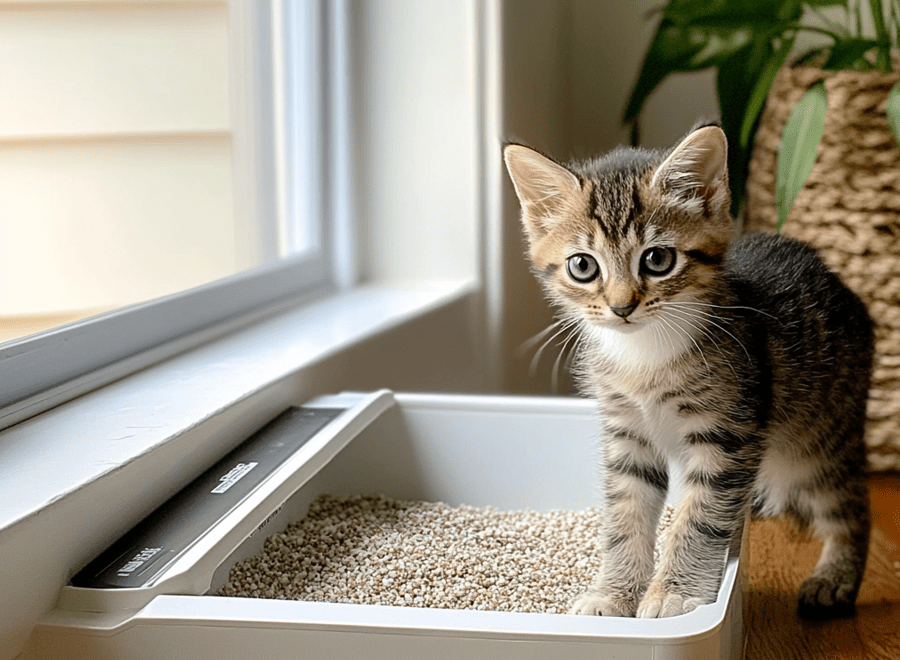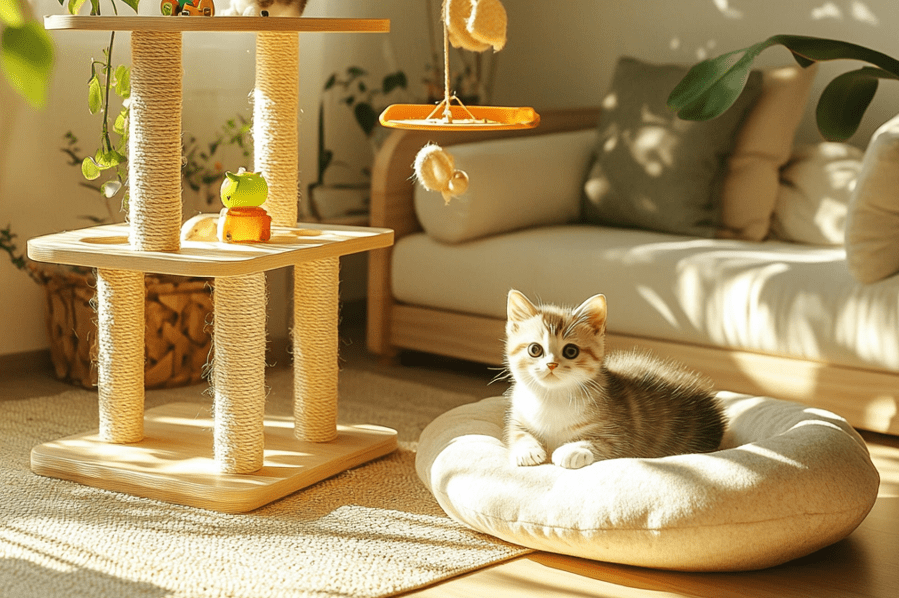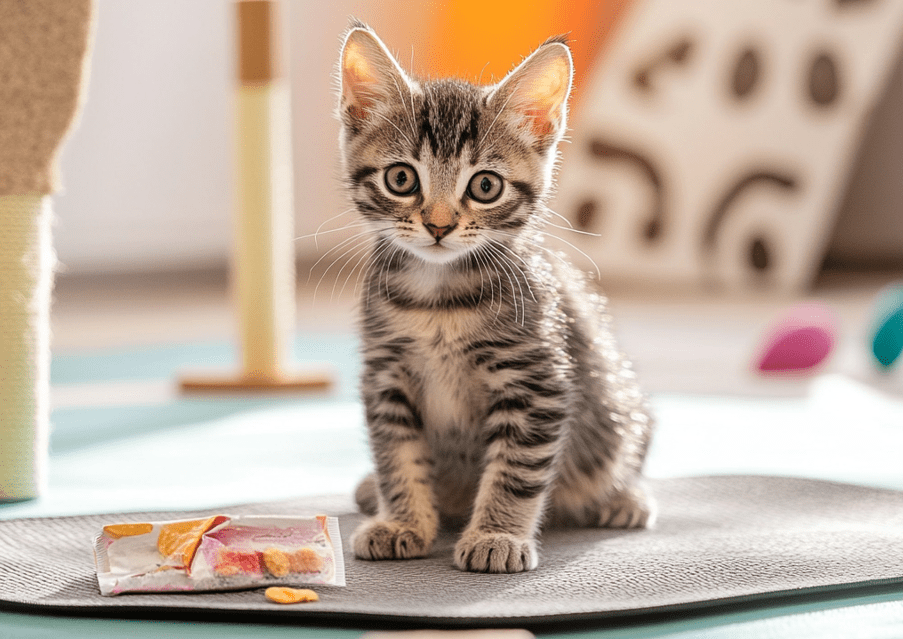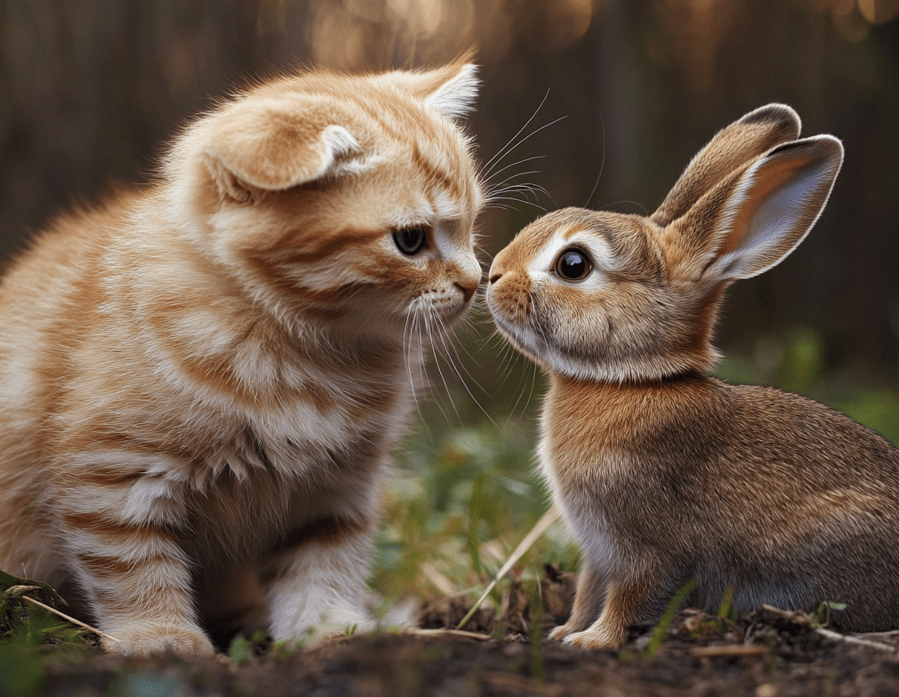
Remember—slow and steady wins the race; you need to keep your expectations in check when bringing a new pet into the home of an existing one. It all depends on the cat, some are more sociable and others are less. An 8-year old cat who has lived much of her life as an only pet may never figure out how to tolerate other animals invading what she perceives to be “her” territory–and her people. But an 8-week-old separated from her mom and littermates for the first time may want to be with another cat or dog. It is important to remember that cats are territorial animals, so introducing them slowly over time can help prevent direct contact and allow each to get used to the scent of its new housemate. This can help to reduce the likelihood of fear and aggression developing in your cat. CAUTION: When you introduce your kitten to other animals, your kitten may not pick up cause from other animals wanting to play. Or other animals don’t understand when your kitten wants to play. If that signal is interpreted as aggressive by one animal, well…you have an aggressive stimulus and you should treat it as such.
Given that cats are known for being independent, they therefore make ideal animals to have as pets: perfect for anyone not wanting a pet with too many needy qualities.
However, this personality trait can turn into a downside as well which is how they might become slightly anti-social or even unpredictable. If you are considering introducing a kitten to your current family pet cat or dog, the most important thing that needs to be kept in mind is patience and fearlessness; they will work for everyone.
In This Article
Allowing the cat to adjust well in its new environment
Beginning the introductions
How to introduce a new cat to your resident cat
How do you introduce a kitten to a dog?
Introduce kittens to Rabbit
Individual Cat/Dog areas
Bringing a kitten home

Fortunately, adult cats are far more accepting of kittens or young cats than other adults. Even better if both cats are neutered (assuming your vet says the kitten’s old enough to be desexed).
The existing cat requires a few days to learn the smell of new mates before bringing the kitten home or rather after getting one into your house. Incorporate the smells from bedding by swapping their bedding back and forth over this first week, if at any point you notice one of your cats becoming agitated or otherwise distressed around smell initiate a connection between that new scent with something beneficial (treats).
Cats can also be friends with dogs, or at least the two subspecies often cohabit quite comfortably (though cats may seem annoyed by the inaccuracies of a dog perhaps occasionally), while other pets cannot safely share living space with any cat. Cats should be kept at a safe distance from small furry animals (e.g. rabbits, guinea pigs, mice, rats and gerbils etc.) and reptiles all of the time.
To allow the cat to adjust in a new place

When you introduce a new cat to your existing pet, the key is that they should both feel relaxed in each other’s presence. Therefore, they need your cat to be at ease in its new home before starting the process.
When it comes time to introduce them for the first time, keep both pets separate for a while. Get your new cat their own private room where they can relax for a few days filled with familiar food, cozy places to sleep, water bowls and litter trays. Place one or two synthetic pheromone spray and plug-in diffusers around the home, particularly in your pets’ living area, these can help them settle as well as accept other pet presence.
Starting the introduction process
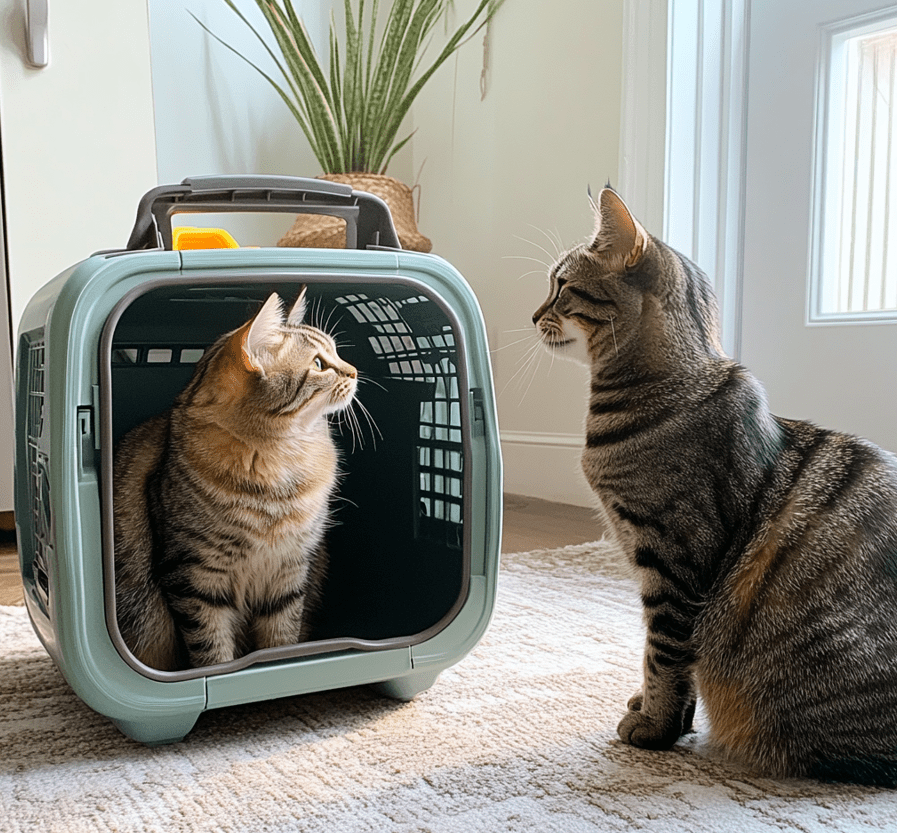
Ways to introduce a new cat in your home
1.If you’re welcoming a second cat into the home of an adult cat already in residence, read on for tips to help make introductions safer and more successful all around!
2.As the new cat is being kept in your room to adjust, slowly start introducing them with the scent of your current cat. House: House has brought home the smell of milking barn cats after petting them. Speak softly to them and stroke reassuringly.
3.When both cats seem to be ok with each other’s scent, release them into one home but keep them in separate rooms or let your new cat explore outside while keeping the old one indoors.
4.Once you know they are each comfortable in the territory of the other ( or that is when one and then, both relaxed!) then slowly begin introducing your cat to a new cat. Let one cat freely wander about to investigate and sniff through the mesh while keeping another behind in a convenient pen or carrier. The enclosed cat will be secure and the basket can allow them to become familiar with people. Once you have all the gear ready for a fishing trip, you do not want to go chasing cats (crazy I hear)!!! They will definitely stare, hiss and do that whole puffing up body language as they adjust to each other. It is all very normal and will soon pass so just try not to react. If you find that the introduction is too intense and they are really trying to slug it out, separate them for a bit before allowing them to try again.
5.Repeat this exercise in different rooms a few times, switching which cat gets to be ‘secure’ and the other has (supervised) freedom until they react well.
6.Allow the cats not to engage with one another. Provide lots of space and hiding spots for when they want only to find some peace.
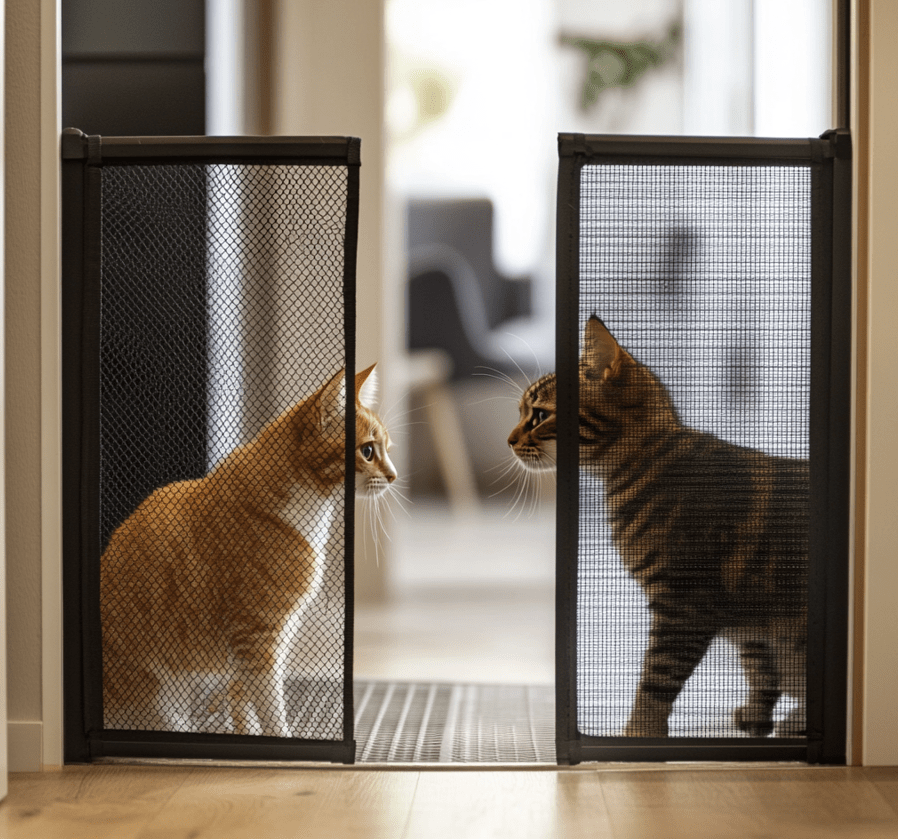
Your two cats should if all goes well end up being the best of pals playing, washing and grooming each other but have patience. It takes time to introduce your new kitten otherwise this kind of relationship will not work at the first go.
If they appear truly uncomfortable around each other and the interactions have not improved, separate them for a while longer before speaking to your vet about more cat advice. In some cases, they may refer you to a cat behaviorist who can give you expert advice.
The Average time of the bond between human and feline to develop should take approximately 2 weeks, when you are bringing in two cats. Take this advice and make sure to try it for two weeks and continue all recommended steps & if after you are still struggling with one or even both feline personalities who just don’t seem compatible no matter how hard things have maybe ask yourself is better off being taken on by another owner. This way you can find a loving home for your new cat with a family nearby, where the cats will get a more friendly welcome by every member of the household.
The best way to introduce a kitten to dogs
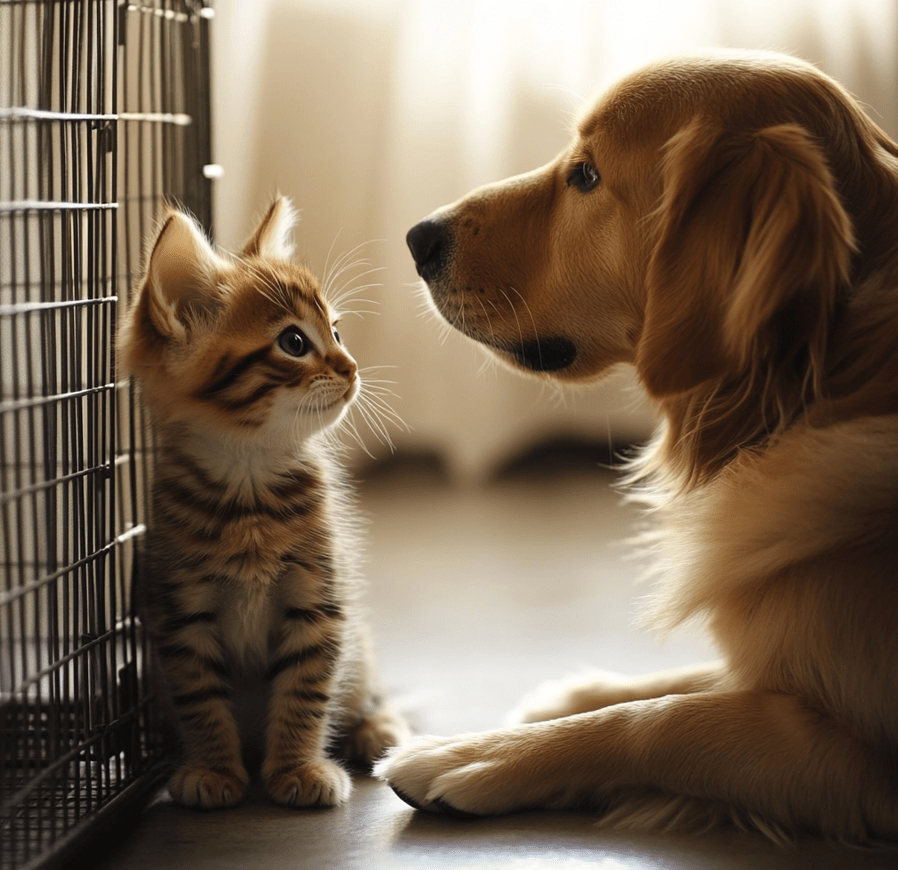
When it comes to a high strung dog, loving enough yet lazy cat and any combination of the two who will meet for an introduction they need some different ideas. This way, introducing our cat to a dog will be safer for both the kitten and your faithful friend.
A dog that is too rambunctious, or a kitten can be seriously hurt and an overwrought cat will use claws mercilessly. So introduce them gradually, focus on the needs of both animals and you can enjoy a happy friendship built on mutual respect.
Even if your existing dog is predisposed to all things feline – and there are breeds known for their friendliness towards cats, despite the stereotype that ‘cats rule dogs drool‘ – you still need to devote a bit of time making sure everyone gets along. Go through our list to help you get one of the smoothest first introductions possible.
1.Introduce the new cat by safely inside a pen indoors or in a carrying case and lead your dog to enter.
2.Now reward your dog for staying calm even if he barks repeatedly, remain calm and cool.
3.Practice in a few different rooms, but ensuring each time that you are setting up both the cat and dog to feel safe.
4.Once you recognize that they are serene and relaxed, set the cat free to come out of her pen or basket but hold your dog on its lead.
5.Remain calm as your pets can sense if you are stressed and let them start to explore each other. Keep rewarding appropriate, relaxed behavior. Do this in as many rooms as you can.
6.Keep them in the same room with you until they are well-behaved, i.e., your dog doesn’t go after her and once he has proven himself to not react or chase her, let him off lead while she’s around
7.Provide your cat a safe and elevated place to get away if it feels threatened; one that is not within reach of the dog.
8.Only introduce your cat to one dog at a time if you have more than one.
How to Introduce Kittens to Rabbits
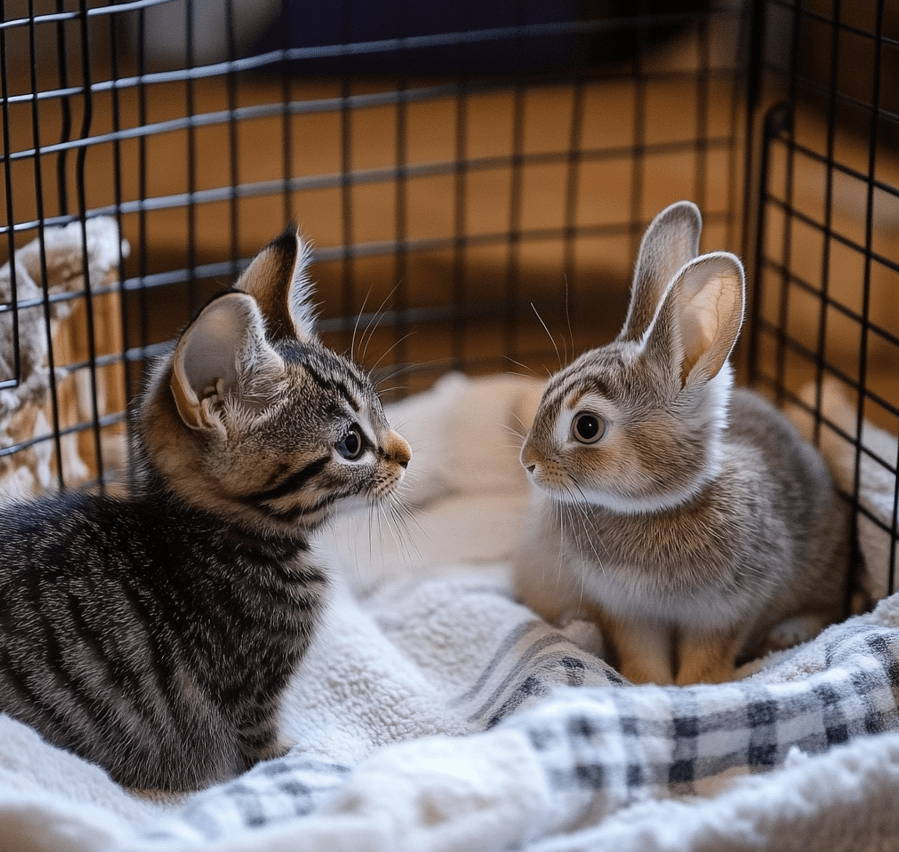
Cats and rabbits can make good companions given the right introduction. If you add a kitten to your bunny family then one would imagine that your rabbit is going to be bigger than the kitten and rabbits because of being prey animals can have some territorial aggression inbuilt into them. So, proper introduction will help ensure that both pets feel comfortable.
They also have sharp teeth and nails so need to be supervised when introducing them to kittens that include making sure the rabbit will not feel threatened.
You should have the first introduction between your kitten and rabbit in a room where your rabbit does not reside. Putting your kitten in a puppy crate as you would when introducing it to your dog is an option for safe nose-to-nose interactions.
When they both appear to be comfortable with this, you can start giving them free reign in the same room. Your rabbit may take time, several weeks to some months before she is ready to accept your kitten. For the time being, until you are sure that both pets seem to be getting along fine (you will see them cleaning each other or snuggling in a bed together), separate them whenever they can’t be directly supervised.
Create personalized cat/dog spaces
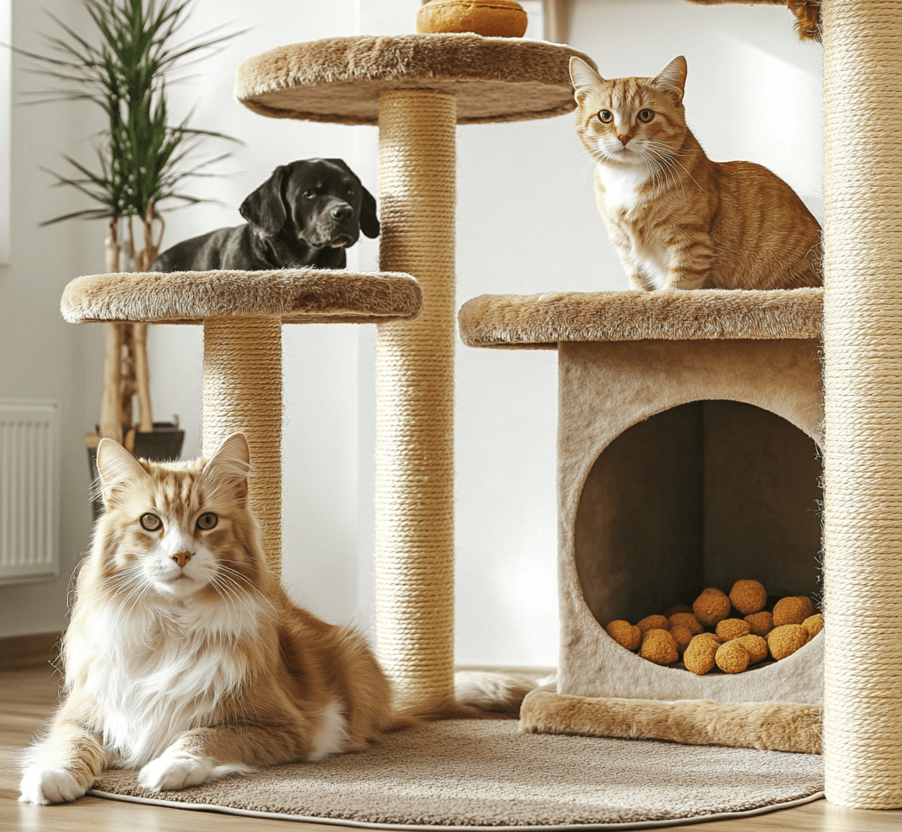
1.Give your dog no access to the cat’s litter box cause dogs are scavengers and will eat from it, not at all nice but reality! Moreover, they should be fed in separate areas so both feel comfortable eating: you could consider feeding them at different times or find a way to feed your cat in an elevated area that the dog cannot access.
2.Ultimately, ensure that your cat has a chance to hunt…should you provide moving toys they can chase, stalk and attack. Most dogs would not appreciate playing with the cat riding on their tail.
3.Safety — this is the first thing that you have to think of when introducing a cat and dog. If the excitation or aggression of your dog is chronic with respect to the cat (or vice versa), have a consultation at your veterinarian and ask whether it would be worth consulting an official pet behaviorist.
Now that we have just learned how to introduce a kitten with a dog or another cat or other animals, this all says be patient and soon they will end up becoming best buddies.

